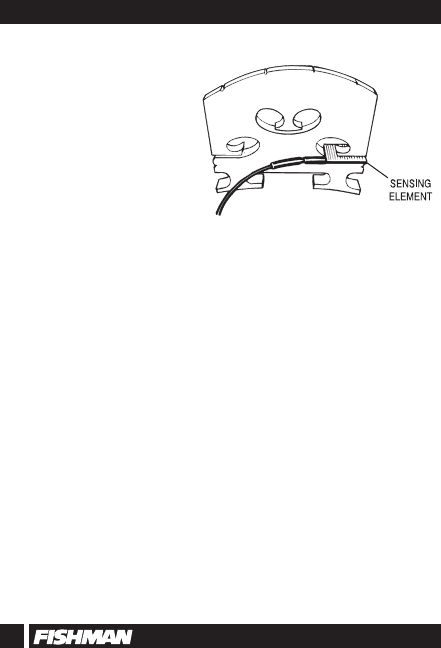
PRELIMINARY
1. Remove all rosin deposits
from the bridge of the
instrument.
2. Examine the bridge closely
to make sure that the wing
slots are free of warps or
irregularities and that the
slots present flat parallel
faces.
INSTALLATION
Measure the opening of the wing slot on the bridge with a vernier caliper.
The opening should be between .060-.090" (1.5-2.3mm) for proper fit.
If the wing slot measures less than .060" (1.5 mm), employ a qualified
repairman to enlarge the wing slot.
If the wing slot measures more than .090 inch (2.3 mm), a small wooden
shim may be required. If so, use an adhesive to bond the shim to the "leg"
face.
Slide the Transducer into the wing slot of the bridge (See Fig.1). Make cer-
tain that the sensing element is in contact with the wing face and that the
spring is in contact with the corresponding "leg" face of the bridge.
The spring (made of tempered beryllium copper) provides the proper ten-
sion for a snug fit in wing slots ranging from .060 inch to .090 inch (1.2 mm
to 2.3 mm).
NOTE: For best performance, the wing slot opening should be exactly .070"
(1.8mm).
INSTALLING THE CARPENTER JACK
After fitting the pickup to the violin, locate the jack to the left of the chinrest
on your violin (See Fig. 2) and tighten it with the enclosed chinrest key (See
Fig. 3). Be careful not to scratch the side of your violin.
V-200 PROFESSIONAL
3
FIG. 1








